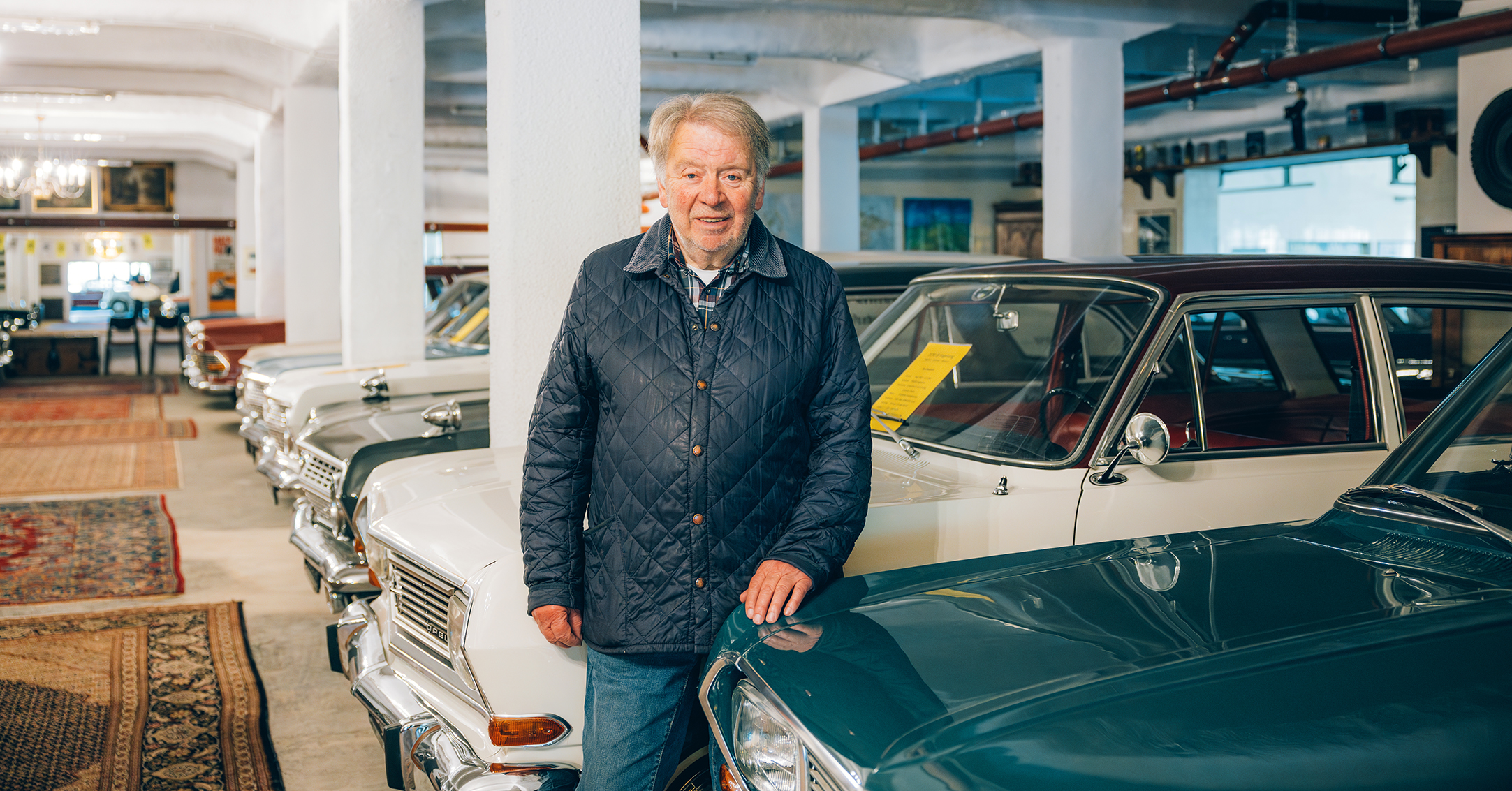Burg Vogelsang stands in the solitude of the North Eifel, above the Urftalsperre (dam) on the Erpenscheid mountain. A place with a tarnished history, one of three so-called Ordensburgen, which the National Socialists built in 1934 in order to train leaders until 1941. American, British and Belgian forces later used the building, which is modelled on a medieval castle. Since spring 2023, the 34,000 square meter facility has been used entirely for non-military purposes: for the Degener Opel Museum (DOM), the world’s largest private collection of models from the brand with the Blitz. The Opel Post was there before the official opening in summer 2023.
“Welcome to the DOM”, Martin Degener greets his visitors. Friends of the brand from all over Europe have already made the pilgrimage to the former Opel dealership in Vreden in the Münsterland. “Vogelsang Castle will now become a new place of pilgrimage for Opel fans and lovers of old metal,” he says with confidence. Several hundred historic Opels belong to the collection of the now 74-year-old, his brother Josef, who is four years his senior, and their family. 150 are to remain in Vreden; In Vogelsang, the family wants to present around 250 Opel oldies – among other things in a 2,100 square meter vehicle yard and adjoining historic halls on a total of two floors plus a basement.
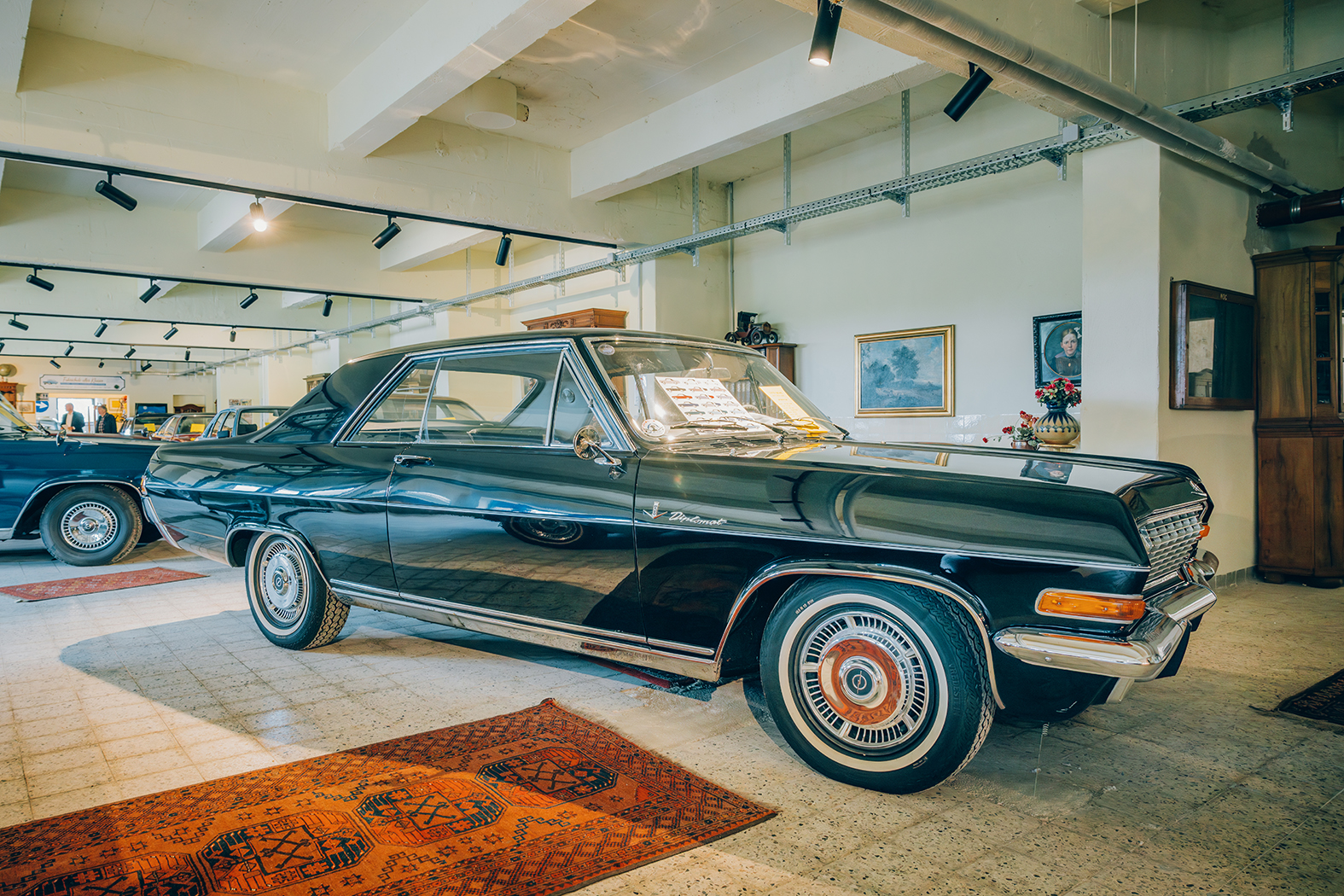
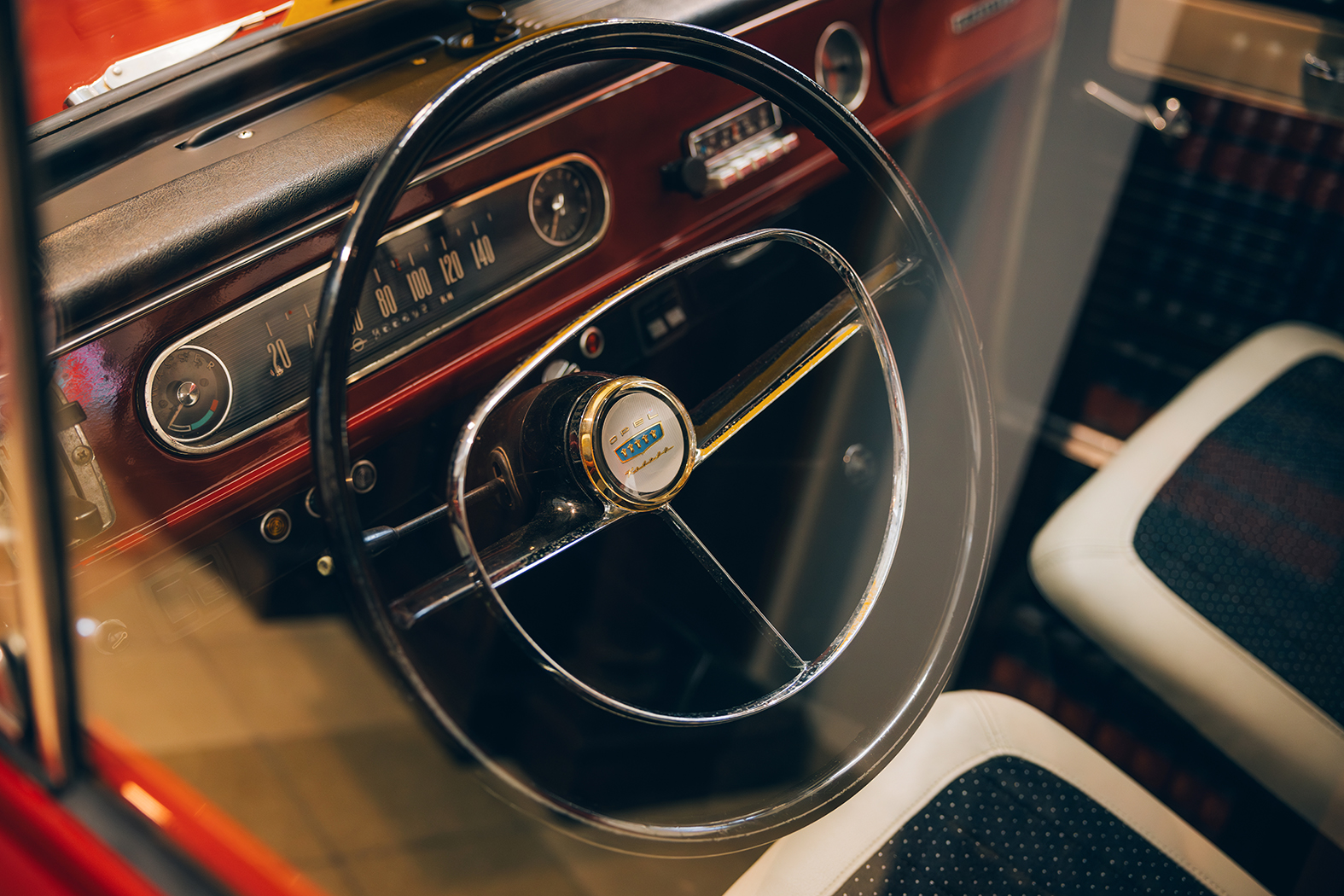
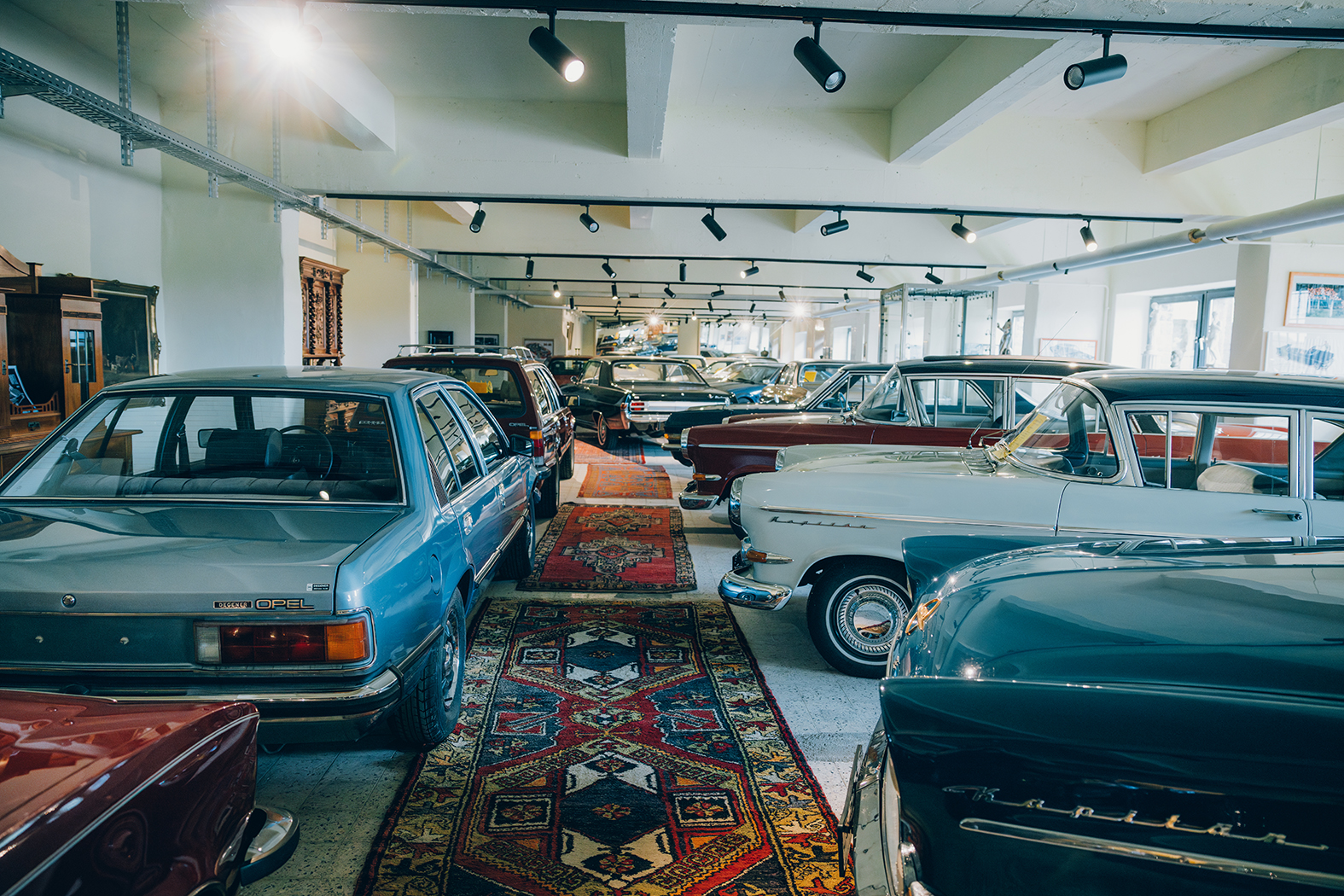
“Burg Vogelsang will be a new place of pilgrimage for Opel fans and lovers of old metal.”
– Martin Degener –
How did this love for Opel come about? His father Anton had been an Opel dealer since 1933. The Degener brothers grew up in their father’s workshop. “After the war we didn’t have a kindergarten in Vreden,” he recalls. Instead of a baggy overall, he wore a small boiler suit. “I could weld before I could write.
More than half a century
When did his passion for collecting begin? More than half a century ago. After the death of his father in 1970, at the tender age of 22, the trained car mechanic and retail salesman took over the business, which he ran until he retired at the age of 65. And in which he still works occasionally today. When one of his first customers bought a new car in 1970 and traded in his Rekord, Degener didn’t have the heart to scrap it. “Our grandmother Katharina always said: You don’t throw away what isn’t worn out. That was the gospel. And an Opel doesn’t go ‘kaput’ easily.”
In the years that followed, Degener was happy about every Opel he took back when selling a brand-new car. And they mostly had a few kilometres on the clock. “Our customers drove their Opel to church on Sundays or to the bull auction at the market in Münster, usually not more than 5,000 km were clocked up over a year.” In addition, his father always sold his customers seat covers, „so that the upholstery still looks like new after 70,000 km.”
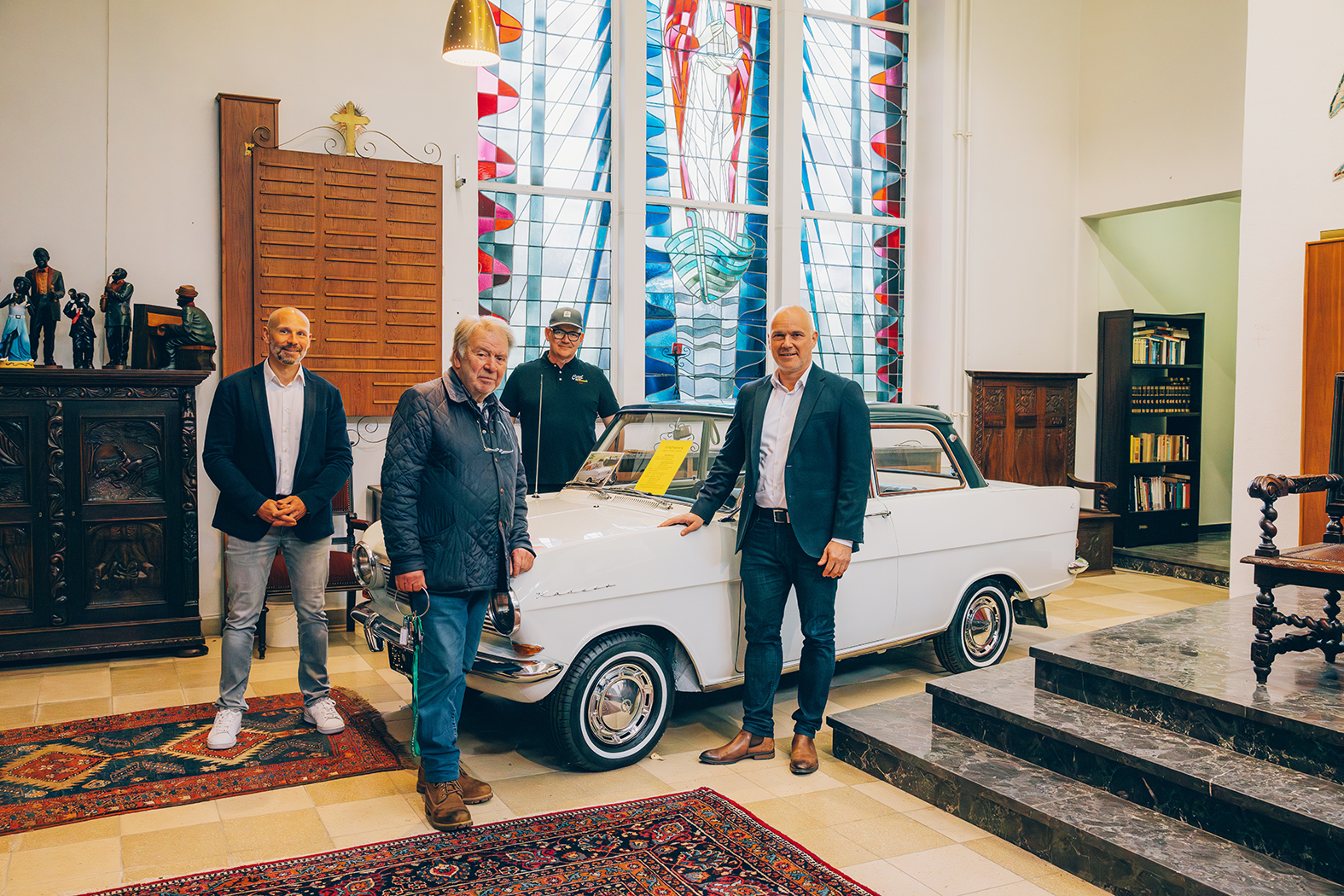
Outside of Vreden he built his first hall with a workshop. In his spare time he worked on and restored the Opels. Since the 1990s, with his employee Clemens Winking and a small “retirees‘ team – it’s a nice club, a pensioners‘ depository,” laughs Degener.
Over the decades, Degener has built up a huge spare parts store and collected restoration objects. Entire car bodies lie patiently in a deep slumber. He stores speedometers, screws, bumpers and chrome parts on long shelves – and knows exactly where everything is.
Complete collection from 1948 to 1980
What is Degener particularly proud of? That he owns one example of every Opel model made between 1948 and 1980. Olympia, Rekord, Kadett, Admiral, Diplomat and all other models from 1948 onwards. He rebuilt them. There are so many cars that some of them are even stacked on self-made shelves. And he knows the history of every car, the previous owners and their experiences.
His greatest treasure? His father’s beige 1948 Olympia. “My brother and I learned to drive on it. Secretly through the fields of our hometown of Vreden. At 10 years old, if our parents didn’t notice.” This Olympia adorns the logo of his new museum. He also cherishes and cares for a piano-black Diplomat Coupé like the apple of his eye. Only 347 of these were ever built.
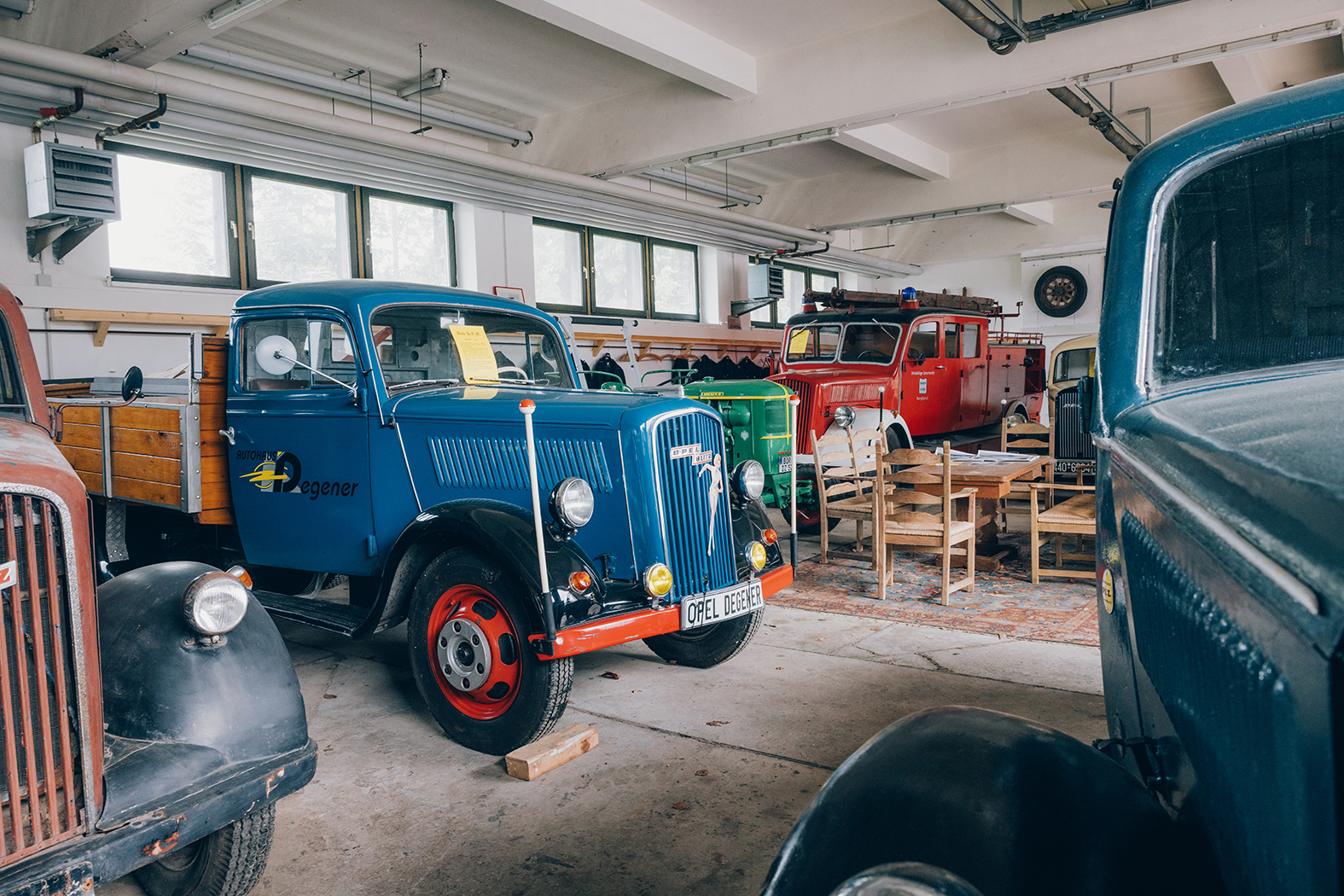
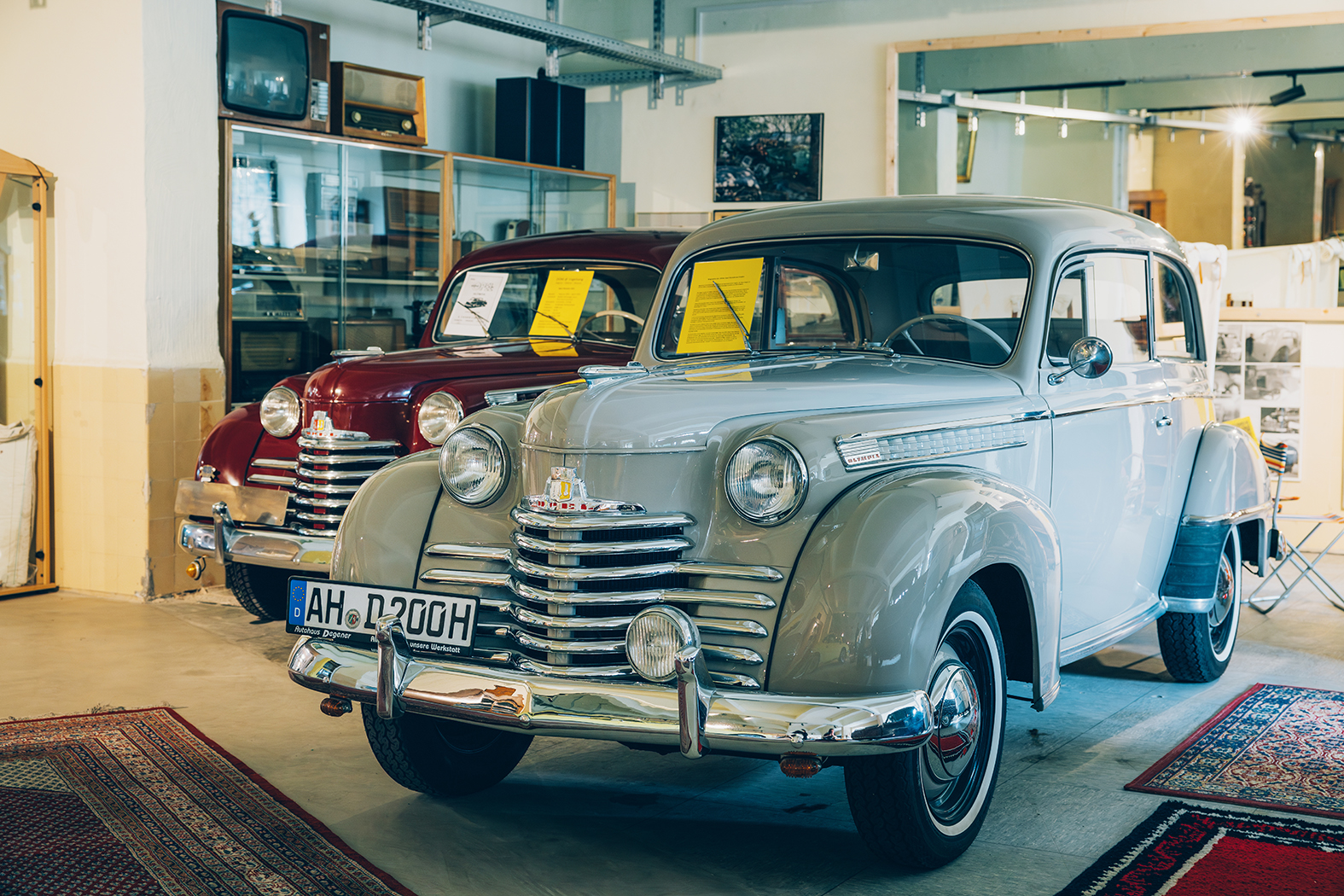
“Our grandmother always said: You don’t throw away what isn’t worn out. An Opel doesn’t go ‘kaput’ easily.”
– Martin Degener –
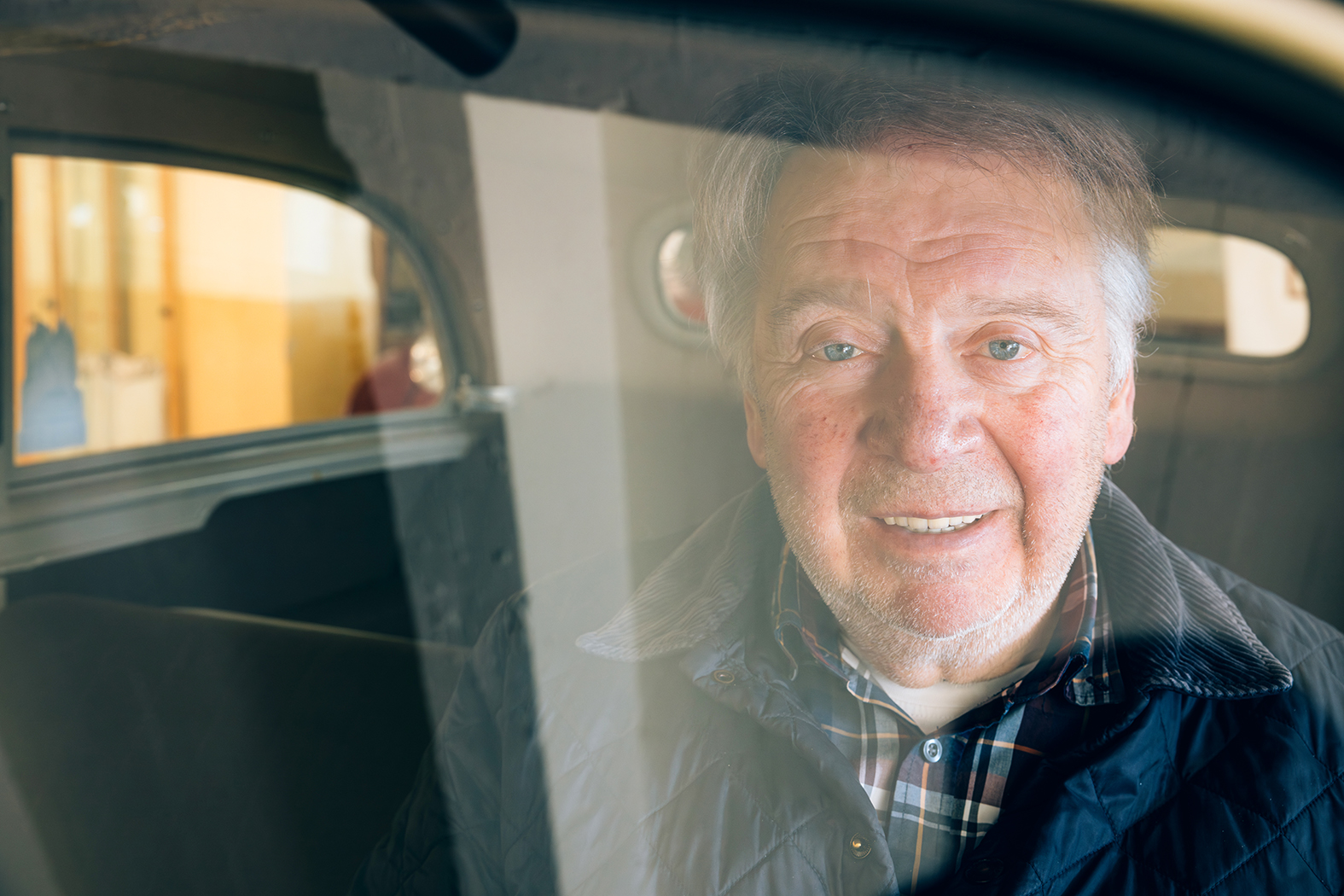
The former, rather desecrated “Malakoff Chapel” now houses nine examples of the Kadett A, including a coupé with red and black paintwork. Why isn’t the stately KAD series presented here? The monument protection forbids widening the doors. Only narrow Opel models fit through. The chapel will soon also be converted into a library. “My brother is a teacher. He has nearly 40,000 books that he can’t part with. They will find a happy home here.”
A place with a charm of its own
Anyone who only expects restorations that are true to the original or a high-gloss museum will be disappointed. Disused Persian carpets and contemporary furniture give this garage full of stories its very own character. True fans of the brand will love this place. “Some models here are even missing from the largest Opel vintage car collection in the world – ours in Rüsselsheim,” says Opel Classic employee Jens Cooper, impressed. And thinks about the quartet of delivery vans from 1953-57 and the Olympia Rekord P1 Caravan and P2 Caravan.
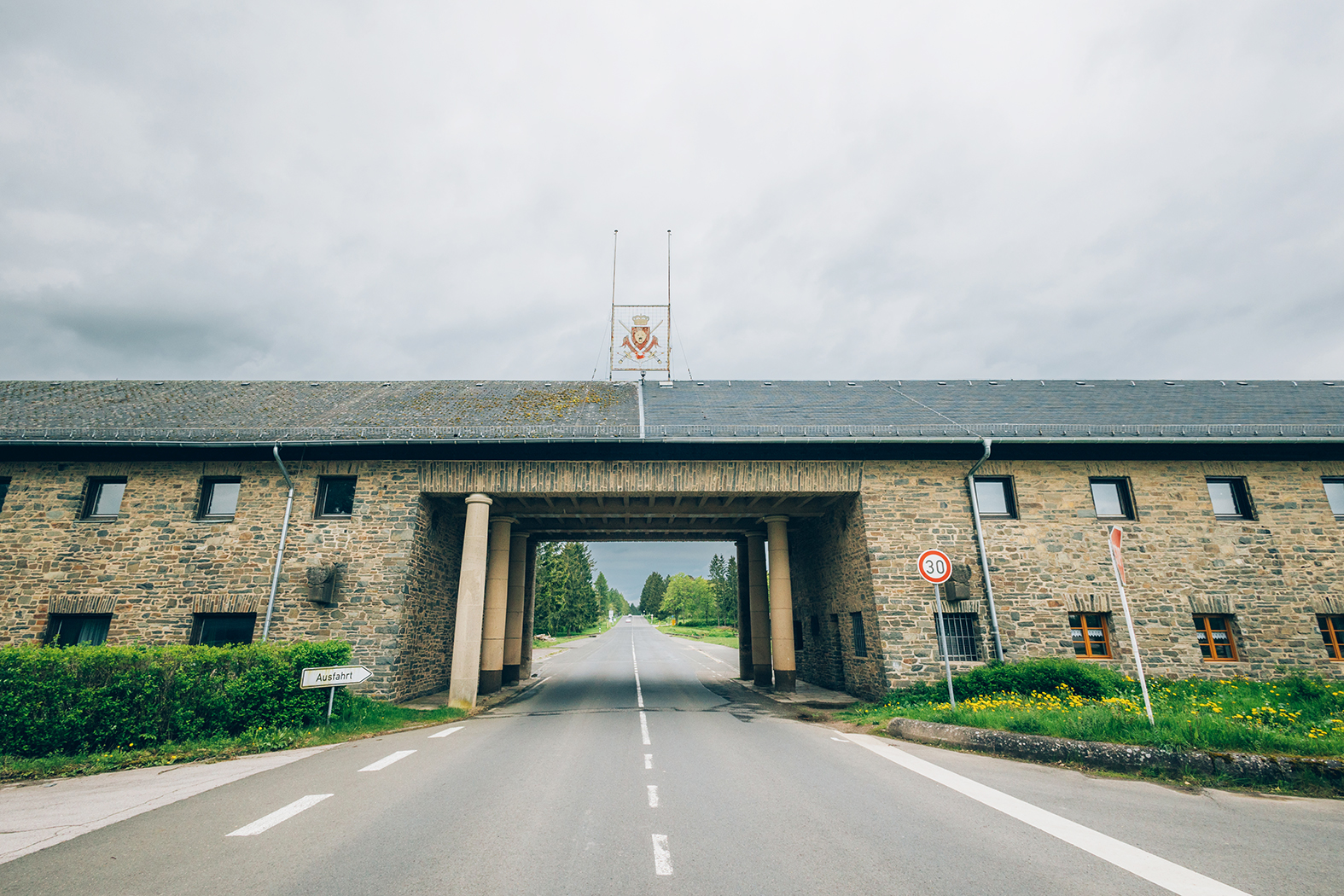
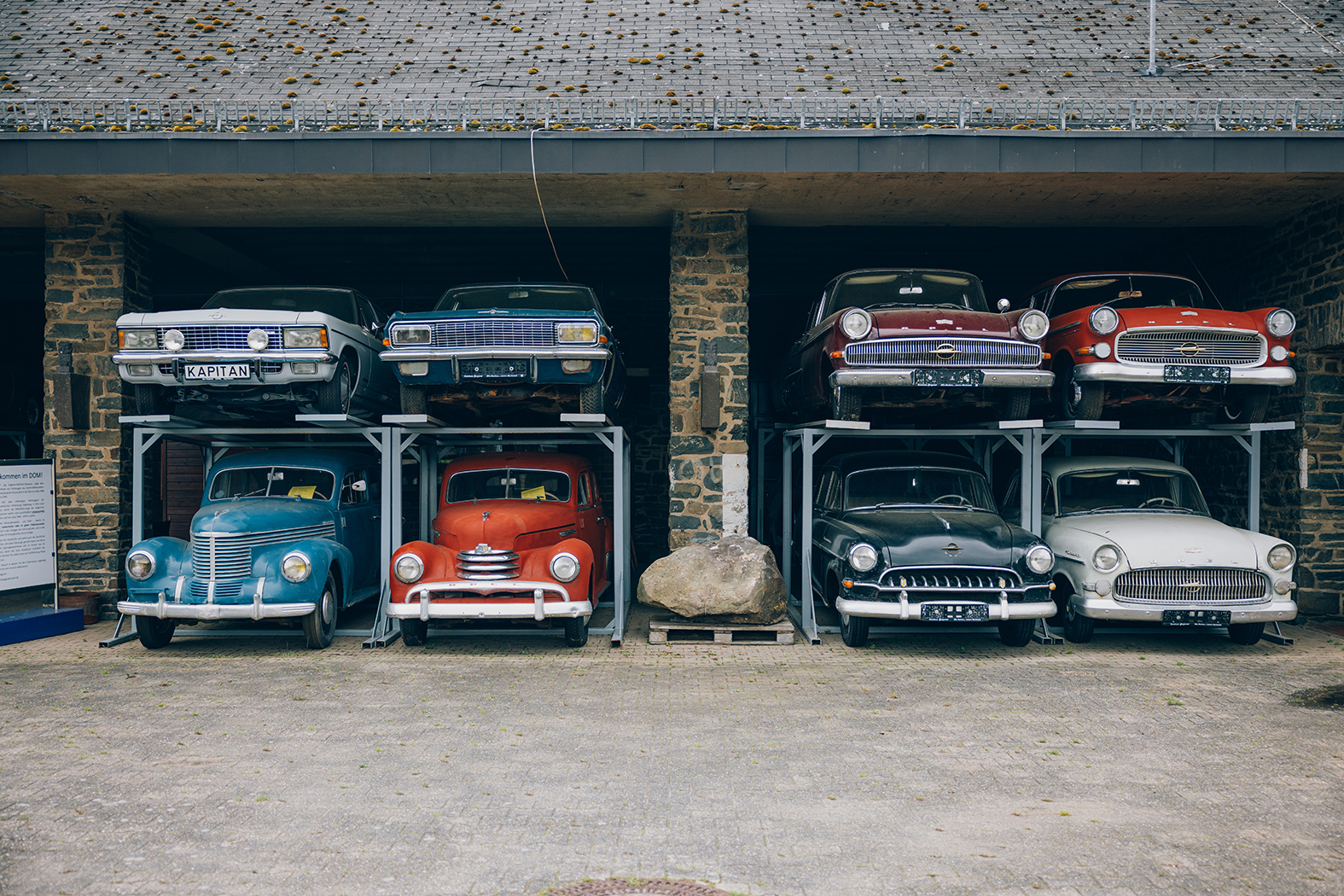
“Some models here are even missing from the largest Opel vintage car collection in the world – ours in Rüsselsheim.”
– Jens Cooper –
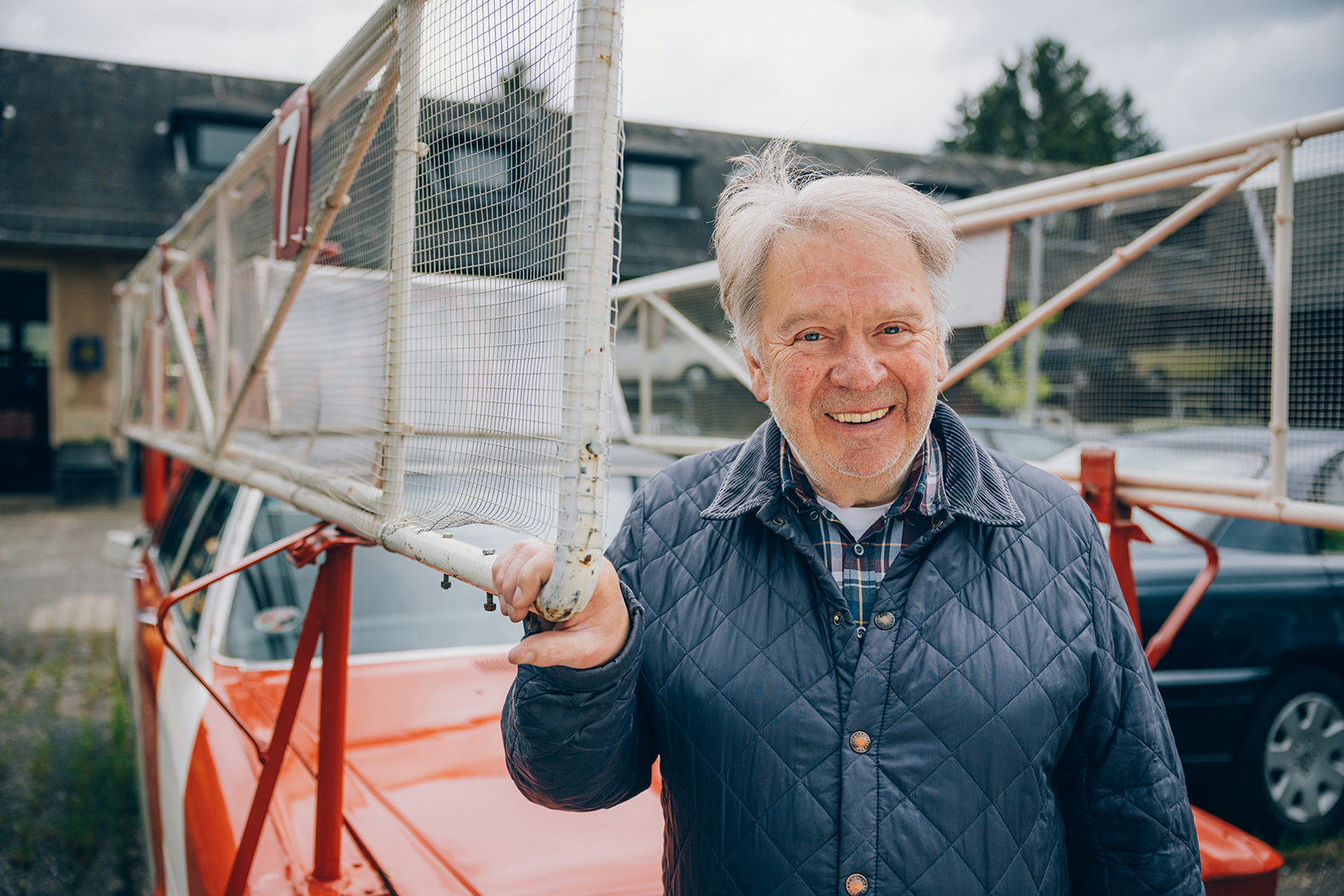
Meanwhile the exhibition grows and grows and grows. Around 30 oldies will soon be added after they have been in two halls in Herne-Süd for more than 30 years; Hilmar Born ran a small museum there and now, at almost 70 years old, wants to take things a little easier. That’s why his sweethearts are moving to his friend Martin: “Hilmar’s Opel Museum will live on, just under a different name here in the DOM.”
July 2023
